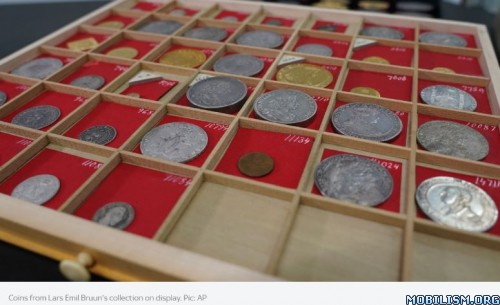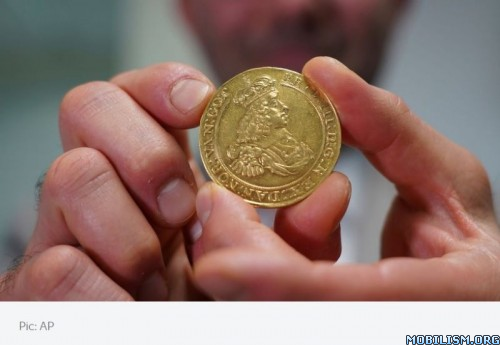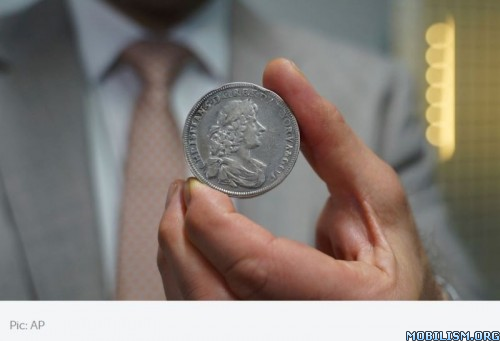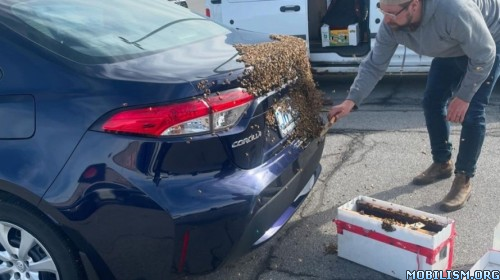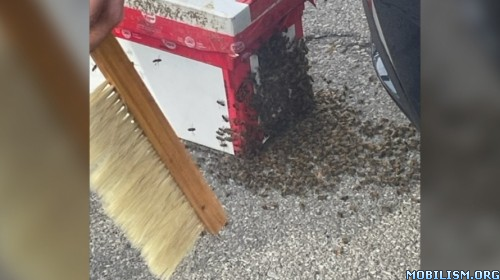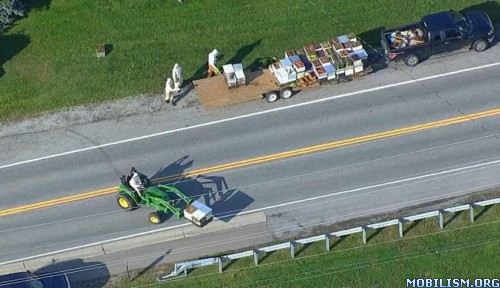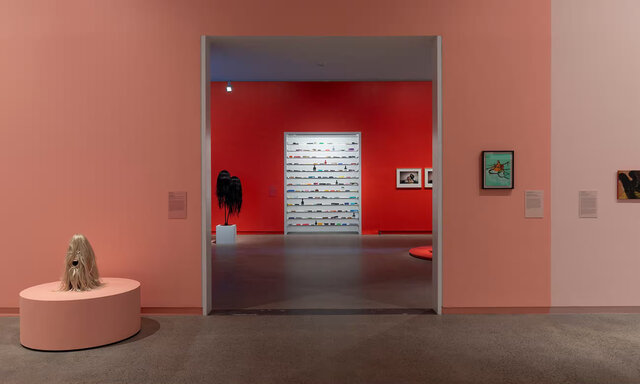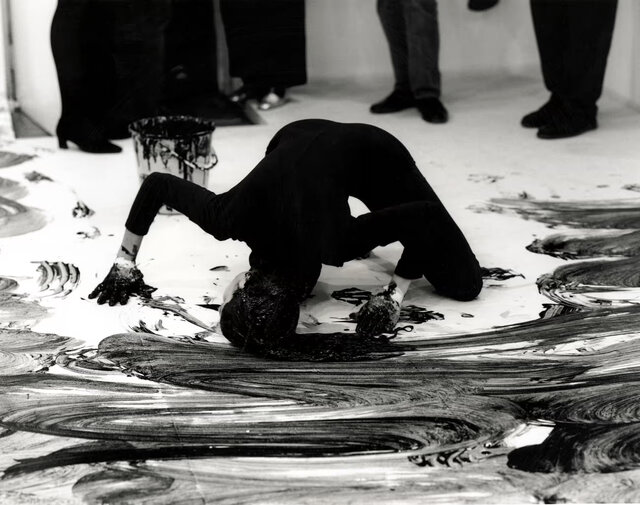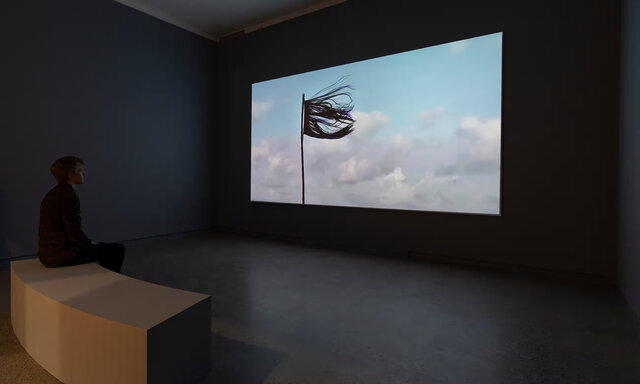Scientists on the cusp of decoding orangutans' secret language - after finding 1,033 distinct sounds apes make to communicate
A three year hunt for patterns hidden in the roars, sighs, and other noises made by Indonesia's orangutans has discovered 'a full spectrum' of complex vocalizations.
The breakthrough comes hot on the heels of other recent discoveries further revealing the depth of the great ape's intelligence — including one orangutan's practice of healing its own injuries with a self-prepared medicinal herb.
The research team reinforced their analysis by testing artificial intelligence (AI) detection methods against the painstaking work of biologists and bioacoustics scientists, employing only their trained ears, intellects and measurement tools.
The Cornell University-led team pooled together a dataset of 117 recorded 'long calls' made by 13 males of one particular species, the Bornean orangutan, employing 46 acoustic measurements on 1,033 distinct pulses detected within those calls.
'These features would seem to greatly boost the potential complexity of this signal,' they wrote, suggesting humanity might soon know what the great apes are saying.
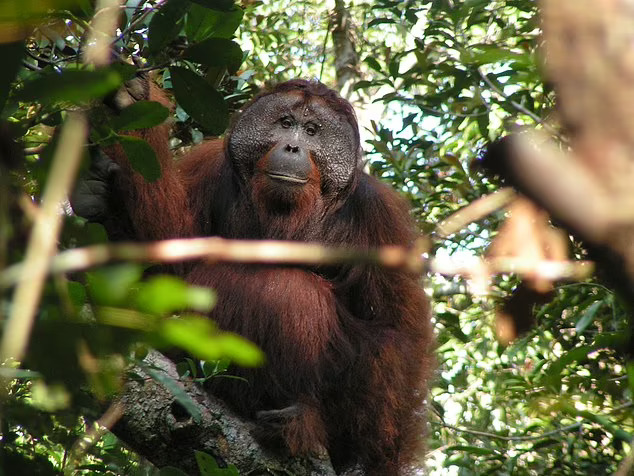
A Cornell-led team pooled together a dataset of 117 recorded 'long calls' made by 13 male orangutans
As reported in the new study, published Tuesday in the journal PeerJ Life & Environment, the researchers found 'a continuous gradation of sounds across phases and pulses,' suggesting orangutans can modulate their voices very precisely.
All these distinct phases and pulses, the team wrote, can be 'combined into variable sequences within a single long call vocalization,' meaning that the male apes' 'long calls' very likely communicate complex messages to their distant ape peers.
'Our research aimed to unravel the complexities of orangutan long calls, which play a crucial role in their communication across vast distances in the dense rainforests of Indonesia,' the study's lead author Dr. Wendy Erb said in a statement.
'We are fairly confident there is much complexity still to unpack in this great ape's vocal system,' Dr. Erb opined.
A primatologist at Cornell's K. Lisa Yang Center for Conservation Bioacoustics, Dr. Erb told Salon that the bioacoustics experts who study the meaning behind animal sounds still lack 'a unifying framework for quantifying complexity.'
As part of their effort to detect and classify the orangutans' noises with AI, the team took parallel 'supervised' and 'unsupervised' machine learning approaches.
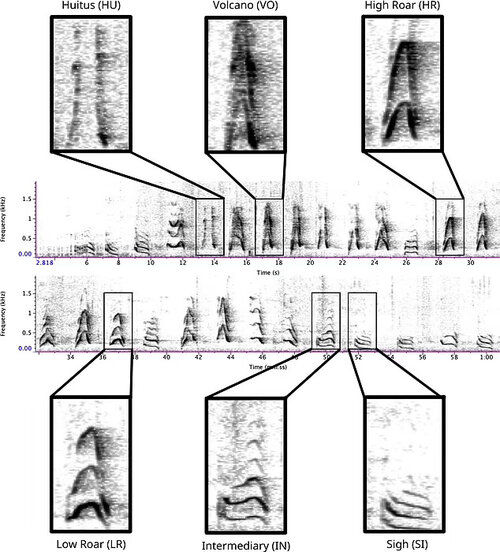
The wave forms of the ape's various, distinct vocal pulses as published by the team in PeerJ Life & Environment
The team used a state-of-the-art unsupervised machine learning algorithm, Uniform Manifold Approximation and Projection (UMAP), that had shown success decoding 'animal vocal repertoires' for the University of California, San Diego back in 2020.
The UMAP algorithm was further assisted by additional statistical algorithms developed in the coding language R.
For their supervised machine learning, R-based code was also used — but in all cases the apes' 1,033 unique vocal phases and pulses were divided at random into a 60/40 split, where 60 percent was used to train the AI, while the remaining 40 percent was used for testing the accuracy of its freshly trained sorting ability.
'Through a combination of supervised and unsupervised analytical methods,' as Dr. Erb summed it up, 'we identified three distinct pulse types that were well differentiated by both humans and machines.'
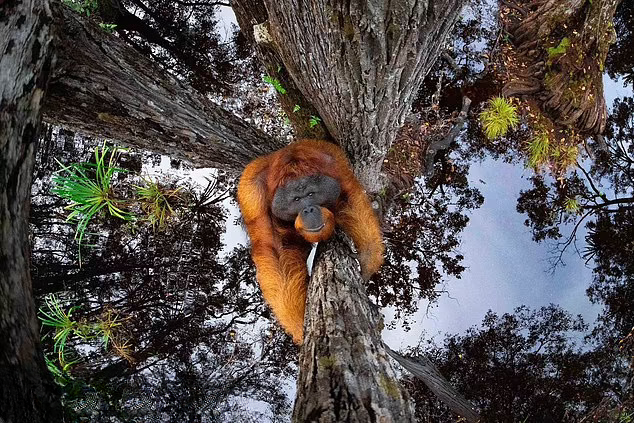
An endangered orangutan stares knowingly into the camera while scaling a tree in Tanjung Puting National Park, Borneo
The names of those three pulse types, as given by the researchers to help steer future study, were: 'Roar' to define high-frequency pulses, 'Sigh' meaning low-frequency pulses, and 'Intermediate' to catch any and all pulses that fell between those two previous categories.
Dr. Erb and her colleagues took pains to emphasize that these were only the limits of their current research, not the limits of what we may one day learn about apes' vocal communication skills.
'Although many pulse types were not well differentiated by humans or machines in this study,' they noted, 'we do not intend to suggest that other workers were unable to make those distinctions or that orangutans cannot perceive them.'
This ability to distinguish and differentiate between the apparently myriad unique sounds that these large primates make, ultimately, will be the next project for those hoping to one day understand and perhaps speak with humanity's primate cousins.
'While our study represents a significant step forward in understanding orangutan communication, there is still much to uncover,' Dr. Erb admited.
'Orangutans may possess a far greater repertoire of sound types than we have described, highlighting the complexity of their vocal system.'
A three year hunt for patterns hidden in the roars, sighs, and other noises made by Indonesia's orangutans has discovered 'a full spectrum' of complex vocalizations.
The breakthrough comes hot on the heels of other recent discoveries further revealing the depth of the great ape's intelligence — including one orangutan's practice of healing its own injuries with a self-prepared medicinal herb.
The research team reinforced their analysis by testing artificial intelligence (AI) detection methods against the painstaking work of biologists and bioacoustics scientists, employing only their trained ears, intellects and measurement tools.
The Cornell University-led team pooled together a dataset of 117 recorded 'long calls' made by 13 males of one particular species, the Bornean orangutan, employing 46 acoustic measurements on 1,033 distinct pulses detected within those calls.
'These features would seem to greatly boost the potential complexity of this signal,' they wrote, suggesting humanity might soon know what the great apes are saying.

A Cornell-led team pooled together a dataset of 117 recorded 'long calls' made by 13 male orangutans
As reported in the new study, published Tuesday in the journal PeerJ Life & Environment, the researchers found 'a continuous gradation of sounds across phases and pulses,' suggesting orangutans can modulate their voices very precisely.
All these distinct phases and pulses, the team wrote, can be 'combined into variable sequences within a single long call vocalization,' meaning that the male apes' 'long calls' very likely communicate complex messages to their distant ape peers.
'Our research aimed to unravel the complexities of orangutan long calls, which play a crucial role in their communication across vast distances in the dense rainforests of Indonesia,' the study's lead author Dr. Wendy Erb said in a statement.
'We are fairly confident there is much complexity still to unpack in this great ape's vocal system,' Dr. Erb opined.
A primatologist at Cornell's K. Lisa Yang Center for Conservation Bioacoustics, Dr. Erb told Salon that the bioacoustics experts who study the meaning behind animal sounds still lack 'a unifying framework for quantifying complexity.'
As part of their effort to detect and classify the orangutans' noises with AI, the team took parallel 'supervised' and 'unsupervised' machine learning approaches.

The wave forms of the ape's various, distinct vocal pulses as published by the team in PeerJ Life & Environment
The team used a state-of-the-art unsupervised machine learning algorithm, Uniform Manifold Approximation and Projection (UMAP), that had shown success decoding 'animal vocal repertoires' for the University of California, San Diego back in 2020.
The UMAP algorithm was further assisted by additional statistical algorithms developed in the coding language R.
For their supervised machine learning, R-based code was also used — but in all cases the apes' 1,033 unique vocal phases and pulses were divided at random into a 60/40 split, where 60 percent was used to train the AI, while the remaining 40 percent was used for testing the accuracy of its freshly trained sorting ability.
'Through a combination of supervised and unsupervised analytical methods,' as Dr. Erb summed it up, 'we identified three distinct pulse types that were well differentiated by both humans and machines.'

An endangered orangutan stares knowingly into the camera while scaling a tree in Tanjung Puting National Park, Borneo
The names of those three pulse types, as given by the researchers to help steer future study, were: 'Roar' to define high-frequency pulses, 'Sigh' meaning low-frequency pulses, and 'Intermediate' to catch any and all pulses that fell between those two previous categories.
Dr. Erb and her colleagues took pains to emphasize that these were only the limits of their current research, not the limits of what we may one day learn about apes' vocal communication skills.
'Although many pulse types were not well differentiated by humans or machines in this study,' they noted, 'we do not intend to suggest that other workers were unable to make those distinctions or that orangutans cannot perceive them.'
This ability to distinguish and differentiate between the apparently myriad unique sounds that these large primates make, ultimately, will be the next project for those hoping to one day understand and perhaps speak with humanity's primate cousins.
'While our study represents a significant step forward in understanding orangutan communication, there is still much to uncover,' Dr. Erb admited.
'Orangutans may possess a far greater repertoire of sound types than we have described, highlighting the complexity of their vocal system.'







